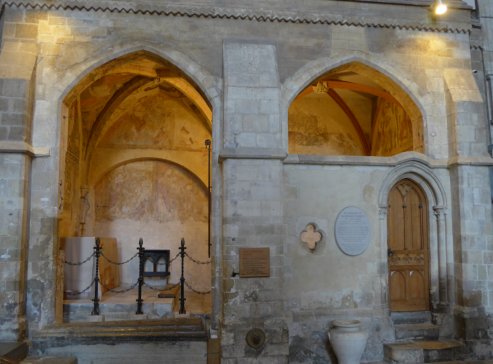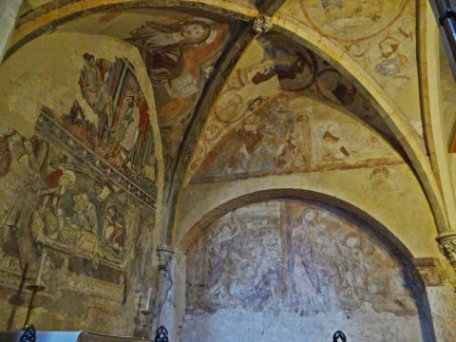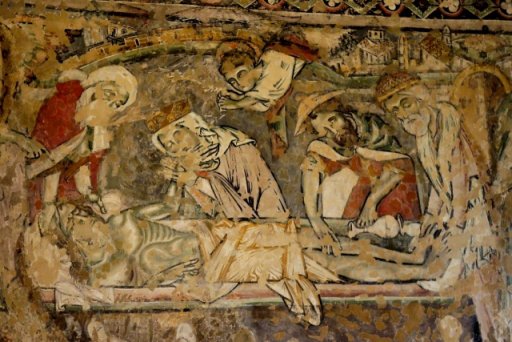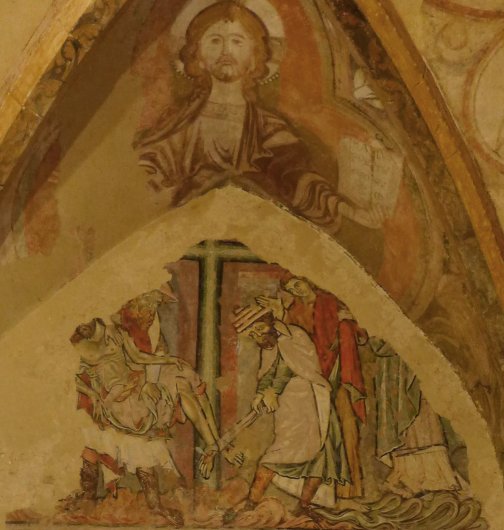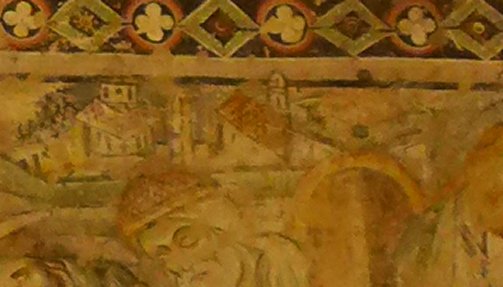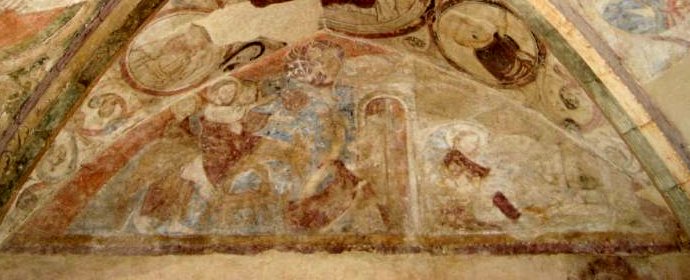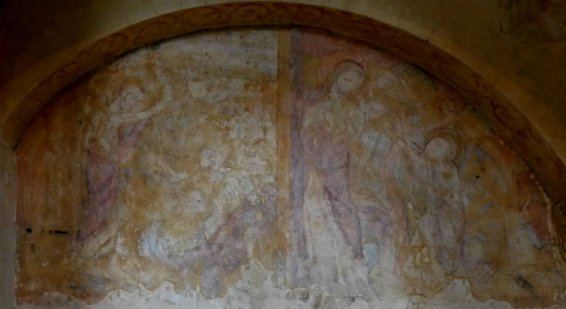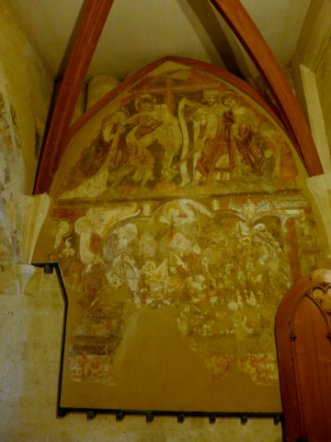|
The Holy Sepulchre chapel in Winchester Cathedral |
|
|
|
|
'Easter sepulchres', traditionally used for rituals remembering the Crucifixion and Resurrection, were once common features in English churches and cathedrals. Sadly, very few are left. The Chapel of the Holy Sepulchre in Winchester is one that remains, and it contains some of the finest early wall painting in the country. The chapel was created under Bishop Henry of Blois (1129 - 1171) And the earliest paintings date from this time. Around 1220 architectural changes necessitated a scheme of redecoration. It has been suggested that another bishop was behind the changes, Peter des Roches, (Bishop 1205 - 1238) who had been a significant figure in the crusades. Peter's interests were military rather than ecclesiastical and he led troops into battle on several occasions, perhaps putting more recent bishops to shame. In the 1960s the 13th century wall paintings were taken down for restoration, and on the east wall the original twelfth century paintings were discovered. The lower painting shows the entombment; above that is the deposition from the cross. The image of Christ on the vault above is from the 13th century. |
|
|
|
|
|
|
|
|
A fascinating element in the deposition is this depiction of Jerusalem and the Holy Sepulchre. |
|
|
|
|
| The 13th century scenes on the south wall show the Entry into Jerusalem and the Raising of Lazarus: below are scenes of the Harrowing of Hell and Noli mi Tangere. | |
|
|
|
|
|
|
| On the west wall the detached 13th century versions of the deposition and entombment from the east wall are on display. | |
|
|
|
| It is not clear exactly how the chapel was used for Easter rituals, but a cleric in the cathedral suggested that at other times it would have been used as a mortuary chapel. | |
